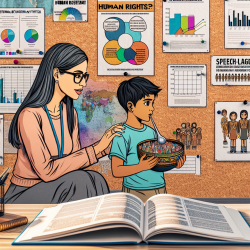Introduction
In the face of adversity, particularly in conflict zones like those affected by Boko Haram in northeast Nigeria, safeguarding the lives of children becomes a paramount concern. The research article "Safeguarding the Lives of Children Affected by Boko Haram" provides a comprehensive analysis using the SAFE model of child protection. This model examines the interrelatedness of safety, access, family, and education and economic security, offering a holistic approach to understanding and addressing the challenges faced by children in conflict zones.
The SAFE Model: A Holistic Approach
The SAFE model stands for Safety, Access, Family, and Education/Economic Security. It is a human rights- and human security-based framework that provides a comprehensive lens through which practitioners can analyze and address the needs of children affected by conflict. This model emphasizes the importance of a holistic, person-centered approach, focusing on the resilience and well-being of individuals within their environment.
Implementing the SAFE Model in Practice
For practitioners in the field of speech-language pathology and child protection, the SAFE model offers a data-driven approach to improving outcomes for children. Here are some practical steps for implementing the model:
- Safety: Ensure that children are protected from harm and have a safe environment to grow and learn. This includes addressing both physical and psychological safety needs.
- Access: Facilitate access to essential services, including healthcare, nutrition, and mental health support. This is crucial for addressing the basic needs of children and promoting their overall well-being.
- Family: Strengthen family and community connections to provide a supportive network for children. Family involvement is critical for fostering a sense of belonging and stability.
- Education and Economic Security: Promote educational opportunities and economic stability to empower children and their families. Education is a key factor in breaking the cycle of poverty and violence.
Encouraging Further Research
While the SAFE model provides a robust framework, ongoing research is essential to refine and adapt strategies to specific contexts. Practitioners are encouraged to engage in further research to explore the unique challenges and opportunities within their communities. Collaborative efforts with local stakeholders, including families, educators, and policymakers, can lead to more effective and sustainable solutions.
Conclusion
The SAFE model offers a transformative approach to child protection, emphasizing the interconnectedness of safety, access, family, and education/economic security. By implementing this model, practitioners can make data-driven decisions that lead to positive outcomes for children affected by conflict. To read the original research paper, please follow this link: Safeguarding the Lives of Children Affected by Boko Haram.










